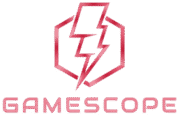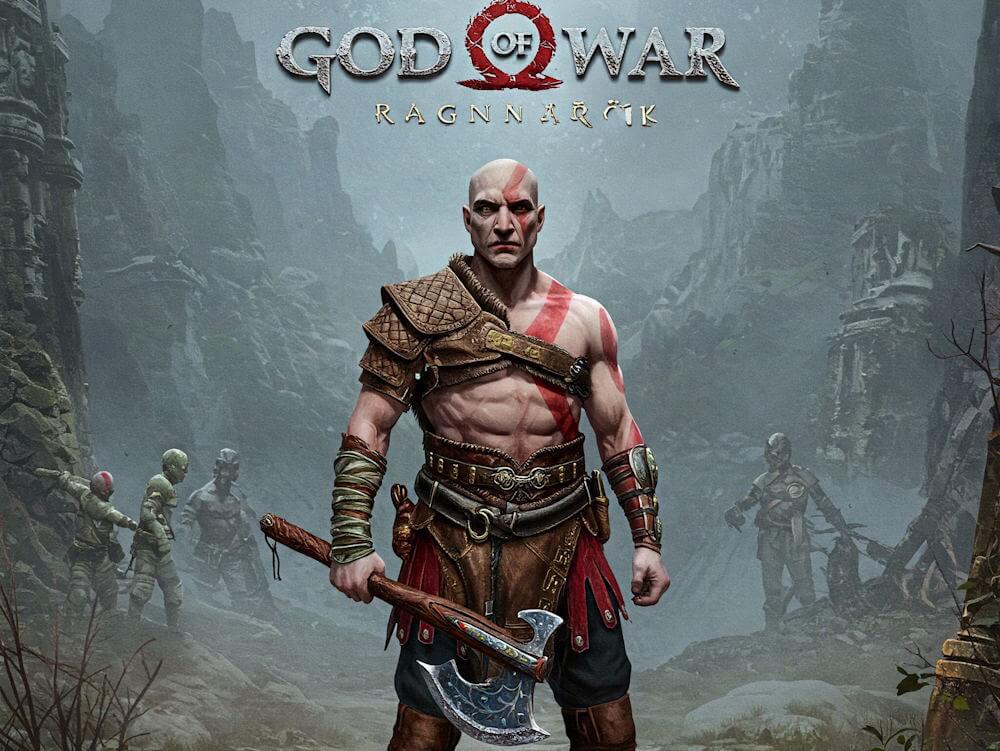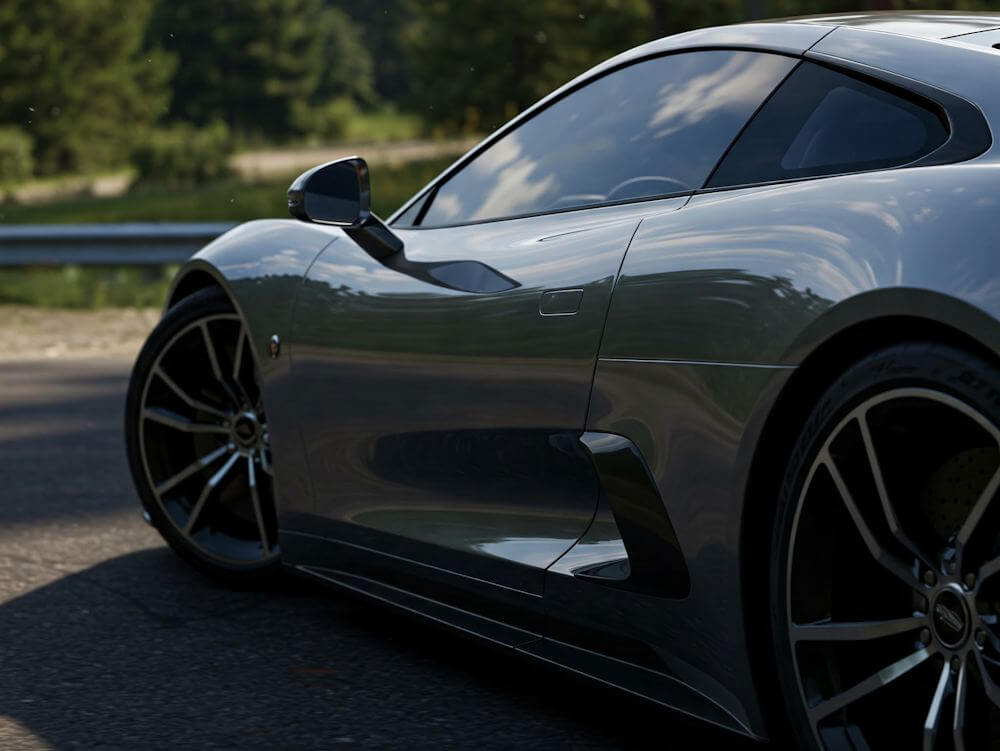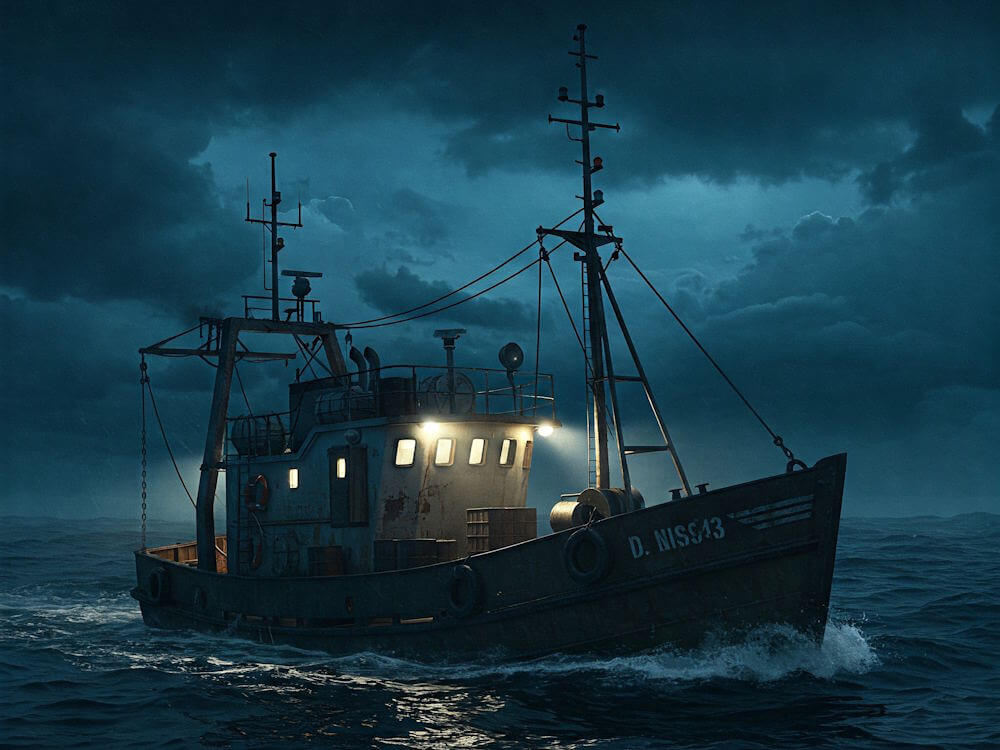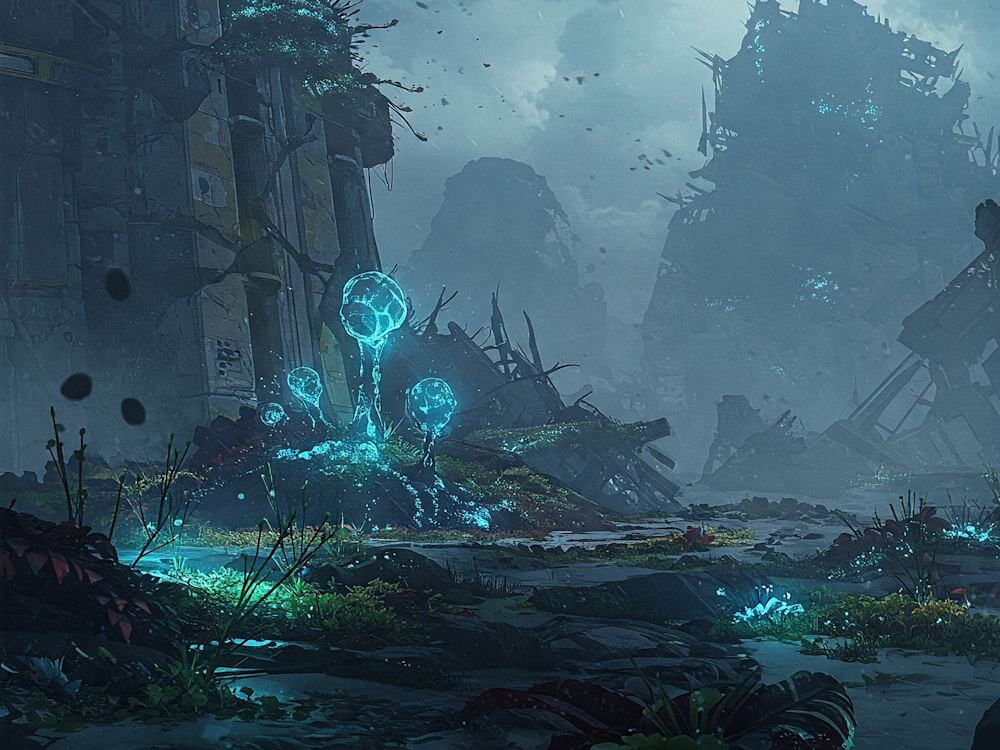God of War Ragnarök is the highly anticipated sequel to 2018’s critically acclaimed God of War. Developed by Santa Monica Studio and released on November 9, 2022, this title continues the immersive narrative that captivated players in its predecessor. The game further explores the rich tapestry of Norse mythology, expanding upon the storyline of Kratos and his son, Atreus, as they navigate the impending conflict known as Ragnarök—an event prophesied to bring about the end of the world as depicted in Norse legends.
This sequel represents a significant evolution in the franchise, blending action and adventure elements with intricate storytelling and character development. Players are poised to experience enhanced gameplay mechanics, including expanded combat systems and new mystical realms that draw from Norse mythology. The emotional depth of the characters is further explored, particularly as Kratos grapples with his past while guiding Atreus through the complexities of their shared destiny. The father-son dynamic remains central, showcasing themes of growth, responsibility, and the burdens of legacy.
The narrative not only continues the journey of these beloved characters but also delves deeper into the lore surrounding Norse gods and mythical beings. God of War Ragnarök positions itself as a pivotal part of gaming narrative, revitalizing interest in ancient myths while providing a modern context. Players are invited to immerse themselves in a visually stunning world that combines engaging storyline with breathtaking landscapes, reinforcing the epic nature of their adventure. As fans eagerly anticipate the next chapter in this saga, they are guaranteed an unforgettable experience that fuses intense action with profound storytelling. The game stands as a testament to the evolution of narrative-driven gaming, further solidifying the legacy of the God of War series.
The Plot: An Epic Tale of Father and Son
In the highly anticipated sequel, God of War Ragnarök, the narrative unfolds as an intricate tapestry woven around the complex relationship between Kratos, the formidable God of War, and his son, Atreus. Set against the backdrop of Norse mythology, the plot intricately explores their journey through a world on the brink of chaos, where the looming threat of Ragnarök serves as the crux of their adventure.
At the heart of the storyline lies the dynamic between father and son, as they navigate the treacherous realms of Midgard and beyond. The game begins with Kratos, who is grappling with his past while attempting to guide Atreus, also known as Loki, on a path that is fraught with challenges. As Atreus begins to uncover his own identity and the powers that come with it, their relationship is tested, reflecting the universal themes of growth and self-discovery.
Throughout their journey, the narrative introduces players to various characters and deities from Norse mythology, each contributing to the tension that permeates the story. Notable confrontations with familiar foes, alongside the emergence of new antagonists, heighten the stakes. The bond between Kratos and Atreus becomes further complicated as they confront destiny itself. They must grapple with the implications of fate and sacrifice, especially as Atreus’s actions can influence the course of Ragnarök, the prophesied cataclysmic event in Norse lore.
The plot not only emphasizes action and adventure but also provides emotional depth, showcasing the growth of both characters. As they face monumental trials, their relationship evolves, bringing to light the struggles of trust, paternal guidance, and the burdens of legacy. God of War Ragnarök captures the essence of a narrative that is as expansive as the realms they explore and as intimate as the bonds they cherish.
Characters: Legends Reimagined
God of War Ragnarök showcases a masterful blend of character development, bringing together both returning figures and exciting new faces within the lush tapestry of Norse mythology. The game explores the complexities of each character, delving into their motivations, relationships, and evolution as the story unfolds. At the heart of the narrative is Kratos, whose journey as a father continues to evolve. Striking a delicate balance between his past as a god of war and his current role as a protector, Kratos’ character arc represents themes of redemption and the struggle against one’s own nature.
Atreus, the son of Kratos, emerges as a more central figure in Ragnarök. His evolution from a naive boy into a complex young man grappling with his identity as Loki introduces an essential dynamic to the father-son relationship. The blend of mentorship, conflict, and love between Kratos and Atreus reflects the broader themes of legacy and responsibility, important motifs within the narrative.
The game also introduces several new characters that enrich the storyline and deepen the lore of Norse mythology. One notable addition is Thor, the God of Thunder, who is portrayed with a nuance that strays from traditional depictions. His struggle with the legacy of his father, Odin, and his turbulent relationship with his brother, Baldur, creates tension that adds depth to the ongoing conflict. Furthermore, characters like Freya further illustrate the complex dynamics within the realm, as her role shifts from an ally to an adversary, showcasing the theme of betrayal and resilience.
Ultimately, each character in God of War Ragnarök plays a pivotal role in the overarching themes of the game. Their individual journeys and relationships intertwine to create a narrative rich in emotional depth, captivating players and immersing them in this Norse epic reimagined.
Gameplay Mechanics: Evolving the Combat System
The evolution of gameplay mechanics in God of War Ragnarök marks a significant advancement over its predecessor, offering players a more immersive and fluid combat experience. The combat system has been refined to allow for greater responsiveness and tactical depth. New combat enhancements include a broader range of abilities that can be executed seamlessly, enabling players to engage in more complex maneuvers during battles. The introduction of diverse weapon options and skill trees allows for personalized combat styles, inviting players to optimize their approach based on play preferences.
Additionally, the game introduces a more dynamic enemy system that requires players to adapt their strategies in real-time. Enemies are smarter and utilize a variety of tactics, encouraging players to use the environment and their surroundings to their advantage. With the incorporation of new elemental effects and attacks, combat encounters are now richer and require strategic planning, contrasting with the somewhat predictable patterns found in the previous game.
Puzzle-solving elements have also received a notable upgrade, incorporating environmental mechanics and character abilities that expand the gameplay beyond mere combat. Players must now engage in critical thinking to navigate through complex environments and unlock new areas. This aspect complements the core gameplay mechanics, as successfully solving puzzles often leads to valuable upgrades or rare resources that enhance character development.
The character abilities in God of War Ragnarök have been expanded to highlight the growth of Kratos and Atreus. These abilities are not only more versatile but also allow for cooperative combos, showcasing their relationship within the narrative context. This connection between story and gameplay ensures that players feel invested in the characters as they encounter both combat and challenges throughout the journey.
Visuals and Sound Design: Immersive Norse World
In God of War Ragnarök, the visual artistry and sound design work in concert to create a richly immersive experience that draws players deeper into the Norse mythology that underpins the game. The game’s graphics have achieved remarkable realism, from detailed character models to expansive environments. The painstaking attention to detail is evident in how the textures of armor and weapons, the lifelike animations of characters, and the atmospheric conditions of the landscapes are rendered. Each realm, whether it’s the verdant forests or frostbitten mountains, is meticulously designed to evoke a genuine sense of place, inviting players to explore the diverse world that lies before them.
Environmental storytelling plays a pivotal role in enhancing the narrative of God of War Ragnarök. Through visual cues and subtle details, players uncover layers of Norse mythology and lore that inform their journey. Ruins, artifacts, and even the flora and fauna contribute to this storytelling, bridging the gap between gameplay and the world’s history. The way these elements are integrated into the environment encourages players to engage with their surroundings, fostering a sense of adventure and discovery as they piece together the story woven throughout each realm.
Additionally, the character designs are noteworthy for how they embody the game’s themes and narratives. Each character, from the protagonists to antagonists, is meticulously crafted to reflect their personality and motivations. The use of color, attire, and facial expressions strengthens the player’s emotional connection to the characters. Furthermore, the game’s soundtrack accompanies these visuals seamlessly, with a powerful score that enhances the emotional impact of key moments. The blend of orchestral music and haunting melodies reflects the tone of the Norse epic, ensuring that the audio experience is as compelling as the visual one.
Themes and Symbols: Deep Layers of Meaning
In “God of War Ragnarök,” various themes and symbols intertwine to create a rich narrative tapestry that resonates deeply with players. One of the central themes is fatherhood, which develops through the complex relationship between Kratos and his son, Atreus. Their journey emphasizes the transformative power of parental bonds, as Kratos navigates the delicate balance between teaching strength and fostering compassion. The evolving dynamics in their relationship illustrate the duality of protection and independence, positioning fatherhood not merely as a motif but as a fundamental force guiding their actions and decisions throughout the epic adventure.
Another significant theme is the tension between fate and free will. The characters grapple with prophetic visions and the weight of destiny, illustrating a philosophical inquiry into the extent of control one possesses over their life paths. As the narrative unfolds, the characters confront the notion that their choices may be predetermined by ancient prophecies or the gods’ manipulations, leading to profound questions about autonomy. Throughout the game, players witness the struggle against this cosmic determinism, which enriches not only the gameplay but also the exploration of deeper existential themes.
The cyclical nature of violence serves as a poignant backdrop that further complicates the narrative. Through the lens of Norse mythology, the game highlights how bloodshed begets more bloodshed, illustrating the tragic consequences of revenge and aggression. This cycle is poignantly manifested in Kratos’ past, where his actions perpetuated a continuous loop of violence. The game’s design reflects upon the possibility of breaking this cycle, emphasizing the importance of choice and redemption. By integrating these themes and symbols, “God of War Ragnarök” offers players a deeply immersive experience that both entertains and provokes thought on the moral complexities of its characters and their journeys.
Reception and Impact: Critical Acclaim and Player Reactions
The release of God of War Ragnarök has been met with resounding critical acclaim, marking a significant milestone in modern gaming. Critics have praised the game’s storytelling, character development, and expansive world design, often highlighting its masterful integration of Norse mythology into an engaging narrative. Reviewers from numerous esteemed platforms commend the game’s stunning visuals and meticulously crafted environments, which enhance the player’s immersive experience. The game has managed to not only build upon its predecessor but also elevate the franchise to new heights, making it a benchmark for future action-adventure titles.
Player reactions have further solidified Ragnarök’s reputation as a monumental title. Many gamers have expressed appreciation for the emotional depth and complexity of the characters, particularly the evolution of Kratos and the relationship with his son Atreus. The dynamic between these two central figures serves as a conduit for exploring themes of family, responsibility, and destiny, resonating profoundly with audiences worldwide. The gameplay mechanics have also received favorable feedback, recognizing the seamless integration of combat and exploration that keeps players engaged.
Beyond its immediate critical and commercial success, God of War Ragnarök has sparked discussions about the potential of video games as a narrative art form. By drawing parallels with classical mythology and incorporating rich storytelling techniques, the game not only entertains but also enriches players’ understanding of mythological elements. Its impact extends into cultural spheres, influencing how stories are told in gaming and prompting new narratives that challenge traditional forms. As players continue to explore its intricacies, the game establishes itself not just as a popular title, but as an enduring influence on the industry’s evolution and a catalyst for discussions around gaming narratives.
Future of the Franchise: What Lies Ahead?
The conclusion of God of War Ragnarök leaves players contemplating the future trajectory of this iconic franchise. With its successful combination of action, narrative depth, and character development, there remains a wealth of potential directions for the series. Following the profound themes explored in Ragnarök, the franchise is primed for further expansion into new realms or perhaps a shift towards other mythological frameworks.
One potential avenue for exploration could be the continuation of Norse mythology, where players might delve deeper into the lesser-known deities and legends that surround the Norse cosmos. Characters such as Tyr, who has yet to unveil the full scope of his role, could lead to new narratives that explore themes of justice, sacrifice, and the intricacies of the Viking age’s beliefs. Additionally, the introduction of post-Ragnarök settings could provide opportunities for Kratos and his son, Atreus, to face the consequences of their actions on the wider world, including interactions with other pantheons.
Another possibility is the inclusion of other mythologies, such as Egyptian or Celtic, tapping into rich narratives and characters that would offer fresh gameplay mechanics and storytelling perspectives. Each mythology comes with its own pantheon of gods, myths, and legendary characters that could enrich the game’s universe, allowing for a more diverse experience. This could also serve to highlight the universal themes present in various mythological traditions, thus highlighting the interconnectedness of these cultures.
As the franchise progresses, we can anticipate the further evolution of Kratos as a character. His journey has matured significantly, and it would be intriguing to see how he navigates relationships with new gods and cultures, perhaps even reflecting on his past as he seeks redemption. The synergy between gameplay innovation and deep narrative psychology can keep players engaged and invested in the unfolding saga. The future indeed holds substantial promise for the next chapters of the God of War series, presenting an exciting landscape filled with endless possibilities.
Conclusion: A Masterpiece of Modern Gaming
In the realm of modern gaming, few titles resonate as profoundly as God of War Ragnarök. This refined Norse epic not only expands upon the rich narrative established in its predecessor but also sets a new benchmark for immersive storytelling and gameplay mechanics. Players are treated to an emotionally charged journey that explores themes of parenthood, destiny, and the weight of past decisions as they traverse the diverse realms of Norse mythology.
The intricate character development seen in Kratos and Atreus adds depth, drawing players deeper into their struggles and triumphs. This relationship is beautifully rendered through engaging dialogue and well-crafted interactions, allowing the player to experience the evolution of their bond first-hand. Each encounter is thoughtfully designed to challenge the player not only tactically but also emotionally, ensuring that every battle is meaningful in the context of their journey.
Moreover, the visuals and sound design in God of War Ragnarök are nothing short of spectacular. The beautifully rendered landscapes, coupled with a hauntingly immersive soundtrack, elevate the experience to an artistic level that few games achieve. This attention to detail solidifies its status as a landmark title that enhances not just gameplay but also narrative storytelling in video games.
As players engage with the richly woven narrative and compelling characters, they find themselves reflecting on their own experiences and choices. The emotional depth and philosophical underpinnings of God of War Ragnarök create a lasting impact, ensuring that its legacy endures in the world of gaming. The game stands as a testament to the power of video games as a medium for storytelling, leaving players eager for what the future may hold within this Norse mythology-inspired universe.
